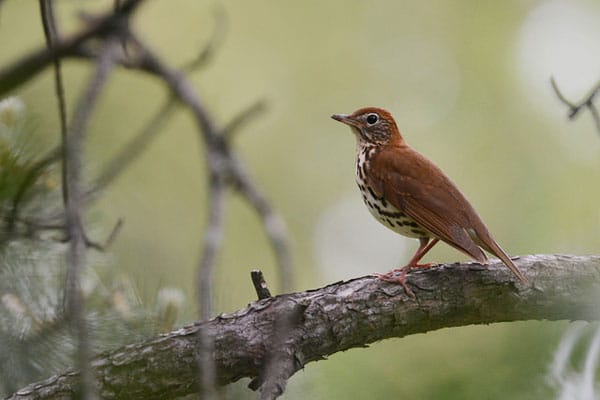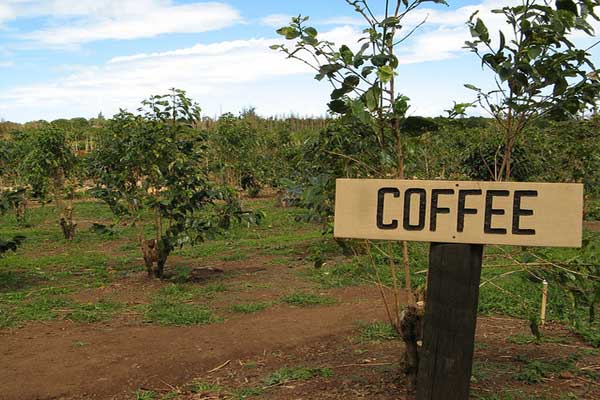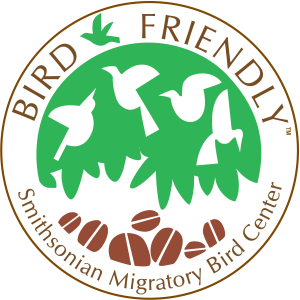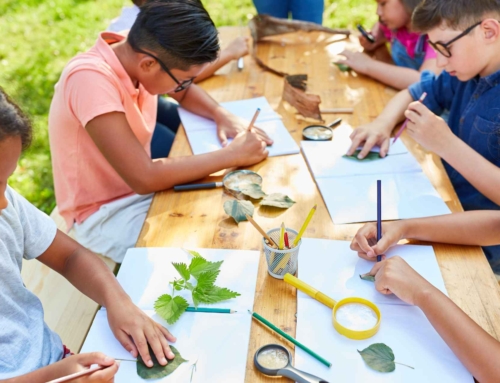Are Songbirds Dying for Coffee? The Answer Will Surprise You.
Disclosure: This post may contain affiliate links
There is a dark secret to coffee and it has to do with songbirds. Here's the connection between the birds and the beans.

What's in this post
By KD Angle-Traegner, Founder & Editor
Looking for Vegan Coffee Creamer?
The Legend of the Beans
Coffee has a long and interesting history. Coffee grown worldwide can trace its heritage back to the ancient forests on the Ethiopian plateau. Coffee trees have grown there for centuries in the Ethiopian highlands, where legend says that the goat herder Kaldi first discovered the magical beans. According to this legend, Kaldi discovered coffee after noticing that the goats in his herd would, upon eating berries from a certain tree, become so energetic that they would not sleep at night.
Kaldi reported this news to the abbot of a local monastery, who took the berries and created a beverage from them. The abbot discovered that this drink kept him alert for the long hours of evening prayer. He shared his discovery with other monks at the monastery, and slowly the news of the energizing beverage began to spread. The news traveled east and coffee reached the Arabian peninsula, where it began a journey which would spread across the world. (1)
The Birds & the Beans: The Song Bird Connection
Across the world, more than 400 billion cups of coffee are consumed each year and global coffee sales top more than $100 billion annually, making it among the most valuable legally traded commodities. Between 14 million and 25 million families are involved in its production, and millions more in the processing, roasting, and selling of coffee. (2) It’s a big business.
But there is a dark side to coffee, one that impacts birds like warblers, orioles, tanagers, wood thrushes, hummingbirds, and other birds who migrate thousands of miles to Latin America for the winter. Coffee farming practices around the globe have eliminated critical habitat for migratory birds and other free-living animals.

In a 2014 study by the University of Texas, a research team summarized that “global coffee distribution patterns and local coffee management practices have exhibited dramatic changes with major implications for ecology.” They reported that land farmed for coffee around the world declined 9% the past 20 years, but the yield increased 36%. Scientists credit the shift to intensive industrial farms that clear lush vegetation and forests to grow beans in full sun, which has caused a corresponding decrease in migratory bird species.
“Few people know how or where their coffee is grown, but would be alarmed if they did,” says Dr. Bridget Stutchbury, Professor of Biology at York University, whom profiled the challenges that migratory birds face in a recent article. “Most of the coffee sold in North America today is grown in the full sun, provides no habitat for wildlife, uses heavy amounts of fertilizer and pesticides, and causes extensive soil erosion in the tropical rainy season.”
Stutchbury has been tracking and studying the wood thrush in particular, a songbird under pressure in North America that winters in Latin America. She considers the wood thrush the ‘canary in the coalmine’ – a songbird that exemplifies the challenges many migratory songbirds face. “This iconic forest bird has lost half its North American population since annual Breeding Bird Survey counts began 50 years ago,” noted Stutchbury, “two major factors are pesticides and tropical deforestation.” (3)
The Shade-Grown Answer
Did you know that coffee comes from a shade-loving shrub that, up until 25 years ago, was only cultivated under a canopy of shade trees? As coffee grew in popularity, full-sun hybrids were developed to allow the creation of massive agribusiness-style plantations. Forests were cleared to make way for full-sun plantations, decimating the environment and migratory bird populations. (4)

Because ecosystem services such as pollination, pest control, climate regulation, and nutrient sequestration are generally greater in shaded coffee farms, you can help migratory birds, the environment, and farmers by buying only organic, fair-trade, shade-grown beans.
The Smithsonian Migratory Bird Center has developed the only 100% organic and shade-grown coffee certification available: Bird Friendly. This means that you are not only getting organically produced coffee, but it also ensures tropical “agroforests” are preserved and migratory birds are able to have a safe haven when migrating to those faraway farms.

First, the coffee is certified organic, which means managing a healthy soil base and applying no harmful pesticides to the coffee that could otherwise run off into streams and rivers. This helps reduce the billions of pounds of noxious chemicals injected annually into natural ecosystems that support wildlife and communities.
But our program goes a step further, requiring a variety of native shade trees throughout the coffee plantation. Through decades of research, we’ve learned the combination of foliage cover, tree height and diversity needed to provide suitable migratory bird habitat while maintaining productive farms. Producers must be recertified every three years to ensure they continue to meet these requirements and can truly call themselves Bird Friendly.
This results in better-tasting coffee—its rich flavor comes from beans maturing slowly in the shade. Farmers protect water sources for their communities and sequester carbon by managing the forest-like system, which also provides a host of other products like cacao and spices. And the premium prices they fetch for Bird Friendly coffee supports their families and local economies.
Some certification programs allow a small percentage of non-certified product in their bag, recognizing the difficulty of controlling the process at the farm level. Other sustainable coffee programs permit product dilution, allowing as little as 30 percent to meet their standards and still carry their certification label. Some shade-grown programs don’t require shade trees meet a minimum height—a factor studies proved is critical to create quality habitat for neotropical migrants and resident birds. SMBC’s Bird Friendly certification is the only one that is 100 percent guaranteed organic and shade-grown, and translates to the healthiest farms.
Reasons to Drink Shade-Grown Bird-Friendly Brew
There are lots of reasons to switch out your regular brew for a bird-friendly brew; here are the top five:
- Save neotropical migrant and local bird species
- Preserve forested habitat in Latin America by supporting coffee production methods that have the lowest environmental impact
- Protect farm workers and their children and neighbors from exposure to toxic chemicals
- Support entire rural communities with jobs and trade via an economically viable farming model
- Save healthy microclimates, a buffer against climate change.
Shopping for Coffee
Obviously it would be awesome if everyone could purchase only Bird-Friendly certified beans, but that is not always going to be possible. Here are a few things to look for when buying beans at your local market or roaster:
- Look for beans that are organically grown. Usually this will mean that the beans are produced without using pesticides or herbicides. This ensures pollution from wastewater and fertilizers is minimized.
- Seek out beans that are Fair Trade Certified. This means that the harvesters work under humane conditions and are paid a fair wage.
- Look for beans that were grown in “rustic” shade cover. This means that the coffee trees were cultivated in 70 – 100 percent shade cover.
- Finally, if possible, buy Bird-Friendly certified coffee.
Conclusion
With the widespread clearing and cutting of forests for sun coffee plantations, it’s more important than ever to protect the tropical forest that remains and rehabilitate the degraded ecosystems. Every cup of organic, fair-trade, shade-grown (and hopefully bird-friendly) coffee you drink encourages more farmers to grow in the shade. That’s good for birds and other free-living animals, and it’s good for us humans, too.
References
All references were retrieved September 28, 2015.
- National Coffee Association. “The History of Coffee.“
- Scientific American. “The Complexity of Coffee.“
- The Solutions Journal. “Has Your Coffee Killed a Songbird?“
- Oxford Journal. “Shade Coffee: Update on a Disappearing Refuge for Biodiversity.“
- The Nature Conservancy. “Buy Sustainable Coffee.“
Photo Coffee Mug: mxttgl
Photo Wood Thrush: Andy Reago & Chrissy McClarren
Photo Coffee Bush: Brian Holsclaw





